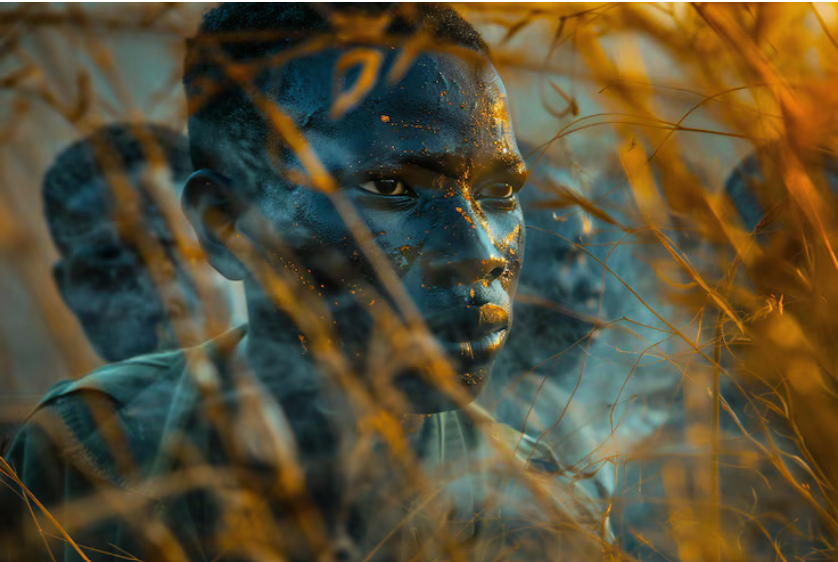The rapid advancements in artificial intelligence (AI) are transforming the way we think about creativity. One of the most exciting applications of AI is in image generation, where AI algorithms can now create stunning visuals from simple text prompts. AI-generated images are redefining the boundaries of design, art, and content creation, offering fresh opportunities for industries ranging from advertising to entertainment. As the technology continues to evolve, the possibilities for AI-generated imagery seem endless.
What Are AI-Generated Images?
AI-generated images are created using machine learning models trained on vast datasets of visual content. These models, such as GANs (Generative Adversarial Networks) and neural networks, learn the intricate patterns and structures of images and can generate entirely new visuals that resemble real-world scenes, objects, or artistic styles. By inputting simple text descriptions, these AI tools can create images from scratch, making them highly valuable for creators who need quick and unique visual content.
Applications of AI-Generated Images Across Industries
AI-generated images are making a significant impact across various sectors. Here’s how they are being used:
- Graphic Design and Marketing:
For graphic designers and marketers, AI-generated images provide a powerful tool for creating unique visuals without the need for extensive graphic design skills. With AI-powered tools, marketers can easily generate visuals for ads, social media posts, and websites, allowing them to stay ahead of the curve in an increasingly competitive digital landscape. The ability to generate a variety of images quickly and cost-effectively is helping brands reach their audiences with fresh, engaging content. - Entertainment and Media:
In the entertainment industry, AI-generated images are revolutionizing content creation. Filmmakers, game developers, and animation studios are using AI tools to generate backgrounds, character designs, and special effects. This technology is accelerating production timelines and reducing costs, making high-quality visual content more accessible to creators of all sizes. AI-generated images also allow for greater creative freedom, as they can quickly iterate on concepts and test different visual styles. - Art and Creativity:
AI-generated images are also pushing the boundaries of traditional art. Artists are now collaborating with AI tools to create entirely new works of art. These AI-generated pieces can combine various styles, from abstract art to hyper-realistic portraits, offering artists new methods of self-expression. Some artists have even sold AI-generated artworks at prestigious art auctions, highlighting the growing legitimacy of AI as a tool for creativity. - Fashion and Product Design:
In the fashion industry, AI-generated images are being used to create new clothing designs, digital prototypes, and virtual fashion shows. By inputting different parameters, designers can explore endless possibilities without physically creating each design. Similarly, product designers use AI-generated imagery to visualize new concepts, speeding up the design process and reducing costs associated with prototyping. - E-commerce and Personalization:
AI-generated images are also enhancing the e-commerce experience. Online retailers can use AI tools to generate product images from different angles, simulate product variations, or create lifestyle images for marketing. Personalized shopping experiences can be powered by AI, offering customers visuals tailored to their preferences or needs. This level of customization can significantly improve customer engagement and conversion rates.
Ethical Considerations and Challenges
While AI-generated images are opening up exciting opportunities, they also raise important ethical concerns. One of the most significant issues is the potential for misuse, such as creating deepfake images or misleading visual content. This is especially concerning in the context of fake news, where AI-generated images could be used to deceive the public. Additionally, the rise of AI in art and design has raised questions about intellectual property and copyright. As AI-generated content becomes more common, it will be crucial to establish clear guidelines on ownership and authorship.
Another challenge is ensuring that AI-generated images do not perpetuate harmful biases. Machine learning models are trained on large datasets, and if these datasets are not diverse, the generated images may reflect skewed or discriminatory representations. It’s essential for AI developers to address these issues to ensure that AI-generated images are inclusive and representative of all communities.
The Future of AI-Generated Images
The future of AI-generated images holds incredible potential. As AI technology continues to evolve, the quality and realism of generated visuals will only improve. Tools like invideo AI are already pushing the boundaries of what’s possible, enabling creators to generate stunning visuals with ease. In the coming years, we may see even more applications of AI in fields such as healthcare, architecture, and education. AI-generated imagery could help doctors visualize medical conditions, architects design more efficient buildings, and educators create immersive learning experiences.
Moreover, the integration of AI-generated images with other technologies, such as virtual reality (VR) and augmented reality (AR), will further enhance their impact. AI-generated content could become a key part of immersive virtual worlds, allowing users to experience realistic environments and interact with AI-generated characters.
Conclusion: A Game-Changer for Creators and Industries
AI-generated images are revolutionizing the way we create and consume visual content. From marketing to entertainment, fashion to fine art, AI is providing new tools for creators to bring their ideas to life faster, more cost-effectively, and with greater creative flexibility. As the technology advances, it will continue to open up new possibilities for industries and redefine the role of creativity in the digital age. However, it’s essential to approach this innovation with responsibility, ensuring that ethical considerations are taken into account as AI becomes an integral part of the creative process.
